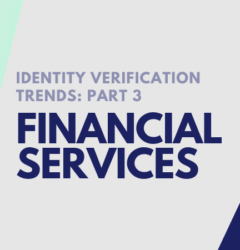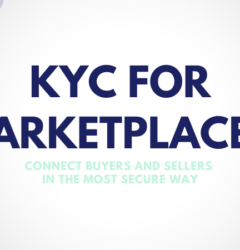27 Jan

The global outbreak of the COVID-19 in the beginning of 2020, has caused a major disruption in the way the world works. The way customers join, operate and use platforms and services has undergone a massive transformation due to numerous lockdowns, which resulted in a growing number of online users and customers worldwide. Handling finances online, seeing health professionals, going to classes or working without leaving the comfort of one’s home became a norm that doesn’t surprise anyone anymore.
One of the things that became a new norm and a huge part of people’s lives, is undergoing COVID-19 tests. Said tests, alongside certifications issued by countries for those who are fully vaccinated against the virus, have become crucial for those who want to cross the borders, travel, or even enjoy their social life more freely.
Who are the at home COVID-19 on video observation for?
COVID-19 tests have become a common occurrence in several different areas of our lives.
First thing that comes to mind is the traveling industry. Several countries require incoming passengers to be tested before entering the country.
Some places, such as the United Kingdom or Australia, require travelers to get tested before and after their arrival in the country.
As a result of the ongoing global changes, there are several medical certificates that were established such as the Fit to Fly certificate. Fit to Fly is a certificate required by several airlines and countries that confirms that the person traveling has recently been tested for COVID-19 with a negative result.
The situation is similar when it comes to social life. In most cases, in order to be able to take part in some sports or entertainment events, proof of vaccination or a negative test may be required.
Additionally, more and more employers are inclined towards regular testing of their employees onsite, to ensure safety and prevention of potential COVID-19 spread. This is especially important for those industries that cannot depend on working remotely.
Depending on current regulations and requirements issued by the lawmakers, COVID-19 tests with video observation could be needed in many industries that are not strictly limited to travel, entertainment, sports, or work. What’s important to note is that the rules are constantly changing, due to the dynamic nature of current events and statistics relating to COVID-19 cases.
COVID-19 tests with video observation: why are they needed?
There are several advantages of requiring COVID-19 tests on video. What is the most important factor, is ensuring the highest level of security and accuracy. There is no doubt that at-home self-tests are a great alternative that does not require people to commute in order to get tested. However, this system is at risk when it comes to forgery or impersonation attempts, which may result in inaccurate information and test results to be submitted.

What are the advantages of COVID testing on video?
- Identity verification: The identity verification performed during the process allows to confirm the identity of a person undergoing a test
- Any possibility of another person taking a test on one’s behalf, as well as forging the tests results are eliminated
- The identity verification process, as well as the self-testing process are fully recorded. It provides an additional layer of security and ensures that the process went accordingly to requirements and given instructions
- The process is entirely customizable, which allows a business or an entity commissioning the test to create a process that fully suits their needs and requirements.
How does COVID testing with video observation work?
This model of video Covid-19 testing process consists of two main stages.
-
The Identity Verification
First of all, after connecting with a trained specialist through video, users undergo an identity verification process. During that time, the user is asked to present their identity document, such as a passport, national ID card or their driving license. In case of the automated process (Self-Verify), the user verifies their identity by following the instructions presented on their screen. After the process is completed, a double check is performed by an agent.
The main purpose of this stage of the verification process is for the operator to validate the authenticity of the presented document, while automated checks are performed in the background by AI softwares – in order to validate data on the document and confirm the ownership of the document. The document ownership is confirmed based on the result of the Face Verification process, which you can read more about here. Additionally, this step is also performed manually by the operator, to add an additional layer of security.
-
Undergoing a COVID-19 test during a live video call
During that stage, a person undergoing the process takes all necessary steps in order to complete the test. To ensure that the test is undertaken correctly, the instructions are given by the operator in real-time. Depending on regulations, it is possible for companies to opt for their own health professionals to act as an operator and perform the whole process, too.
How can Fully-Verified help?
When it comes to performing such procedures, it is important to choose the right provider that will ensure the highest level of quality, security and compliance with regulations.
Fully-Verified offers a range of KYC-related services, including two models of identity verification service.
- Live-Verify consists of a live video call with a highly trained operator. During this process, the operator verifies the identity of the end-user, with help of checks performed by AI- and machine learning-based softwares. This combination allows to not only safely verify the identity of a person, but also to authenticate their document and confirm the rightful ownership of it.
The presence of the operator during a live video call allows the process to include several additional steps, such as: additional questions, required documents checks, and so on. The process is flexible and fully-customizable to suit the needs of an organization commissioning the test.
- Self-Verify is an automated identity verification solution. During that process, the end-user undergoes verification on their own, following the instructions displayed on their screen. The process is also fully recorded, and double-checked by a trained agent once the verification is completed, to ensure the highest level of security.
Live-Verify and Self-Verify are solutions that provide the highest level of security for service providers from several fields, health industry being one of them.
During the verification process, data from the identity document is scanned, extracted and validated by AI and machine learning-based software. Additionally, a Face Verification check is performed during the process to confirm the ownership of the document.
At the same time, a security check is performed by an operator, to ensure that the document is authentic. In case of the Self-Verify model, the additional check is performed after the process is completed by the user.
Conclusion
Considering the impact that the COVID-19 pandemic has had on people’s lives globally for the past two years, it is safe to assume that COVID-19 tests will continue to be a part of our lives for a while. It is important to ensure that going forward, this process is easily accessible, secure and smooth for people undertaking the test. At the same time, it is crucial to guarantee the highest level of security, and eliminate the risk of fraudulent activity.
COVID-19 tests with video observation are a safe, reliable, and easily-accessible method. They can be done from anywhere in the world. All that is required from a user to obtain a test this way is a stable Internet connection, a device such as a mobile phone or a laptop with a web camera, and the testing kit. The rest should be handled by professionals who will ensure the highest security, while adjusting the process to the client’s needs.
Related Post
Search
Recent Post
 Protecting Players and O…June 15, 2023
Protecting Players and O…June 15, 2023 From Anonymous to Accoun…May 25, 2023
From Anonymous to Accoun…May 25, 2023 The Future of Identity V…May 10, 2023
The Future of Identity V…May 10, 2023 Is It Time to Invest in …April 26, 2023
Is It Time to Invest in …April 26, 2023 KYC in financial and ban…March 24, 2023
KYC in financial and ban…March 24, 2023
Categories
Archives
- June 2023
- May 2023
- April 2023
- March 2023
- January 2023
- December 2022
- October 2022
- August 2022
- July 2022
- June 2022
- April 2022
- March 2022
- February 2022
- January 2022
- December 2021
- November 2021
- October 2021
- September 2021
- August 2021
- July 2021
- June 2021
- May 2021
- April 2021
- March 2021
- February 2021
- January 2021
- November 2020
- July 2020
- March 2020
- November 2018
Fully-Verified was created as answer to its founders collectively losing over $150 000 to various types of fraud in their eCommerce businesses.









